Blogs
Creatures of Culture: The Animal World in Art
Shubhasree Purkayastha
Our interest in the animal world is as old as time. Even before we learnt how to farm or build houses, we were drawing animals in our cave walls, spinning magical stories around them and venerating them in our shrines. Learn more about the representation of the animal world in Indian art.
Our interest in the animal world is as old as time. Even before we learnt how to farm or build houses, we were drawing animals in our cave walls, spinning magical stories around them and venerating them in our shrines. With time, the animal world was to only grow more integral to our everyday lives, our collective imagination and our visual vocabulary.
MAP’s collections are home to prowling tigers, majestic elephants, hooded serpents, slithering lizards, soaring eagles, glittering crocodiles, countless bulls–and many other kinds of creepy crawlies, birds, reptiles and animals–that come to life in a range of materials from paper and clay to marble and cloth. Here’s a look at some, from the realistic to the abstract and the fantastic!

Narmada Prasad Tekam, Mangra (crocodile), Poster colour on paper, 1990s
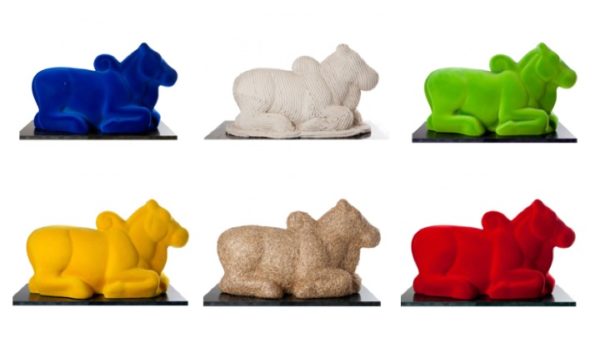
Arunkumar H. G., From a series of Nandis, Various (velvet on fibreglass; cotton rope on fibreglass; polythene, straw, resin and steel), 2008
The Realistic Life Study
In Mughal India, there was a growing interest in both the realistic painting style prevalent in Europe as well as exotic animals – both of which were brought into the country by European missionaries, traders and diplomats. Rulers like Akbar and Jahangir, particularly the latter, took a keen interest in naturalism and had experts in their painting ateliers make extremely accurate live drawings of flora and fauna. Drawings, miniature paintings and illuminated manuscripts from the Mughal and other royal courts serve today, as invaluable records of these artists’ draughtsmanship and eye for detail.
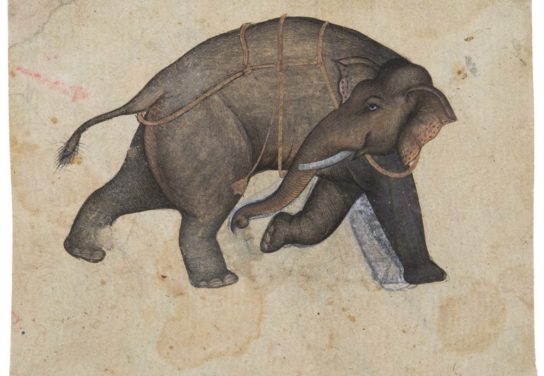
Tamed elephant with trappings, Opaque watercolour on paper
The Ornamental Form
Animals often feature as decorative motifs in objects of everyday use as well as luxury items. The trend of using animal motifs to decorate jewellery and accessories goes back to the ancient world and continues today with a particular popularity of the cat and the owl motifs on garments and everyday essentials!
Ornamentation using animal motifs also present instances where the animal form and that of the object seamlessly merge into one another, serving as testament to the ingenuity and creativity of the craftsmen and designers who produced them.

A Dhurrie featuring zebras, Cotton, tapestry woven, 1935
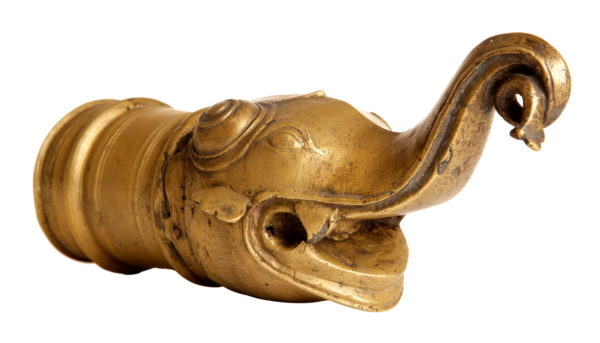
Palanquin pole-end shaped like an elephant, Brass, 19th century
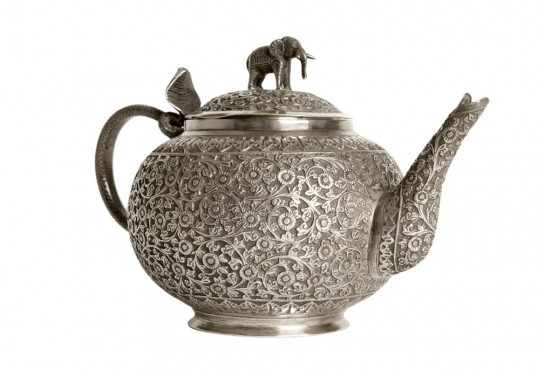
A teapot with a snake-shaped handle and an elephant crowning the lid, Silver, c. 1850
Playing Symbolic Roles
Animals have always been powerful symbols, whether in religious traditions, nationalist narratives, or as storytelling devices.
The lion, for example, has been an important symbol to humans for centuries. If early depictions featured them as hunters with great strength and skills, later representations featured them in significant roles as magical beings and guardians, as deities or in close association with deities. Even outside their religious associations, they were seen as symbolising power, strength, pride and bravery, featuring prominently in clan identities, royal coat of arms, and in more modern times, various national and state emblems.

Durga or Mahishasura Mardini (the slayer of Mahishasura), 1880s, Lithograph on paper

Textile label featuring Queen Victoria and the English lion, 1870s, Chromolithograph on paper
The Fantastic & Fanciful
The most curious exploration of animals in the visual arts however, is perhaps the idea of hybrids and composites. For centuries, humankind has been creating fantastical creatures in their imagination which often take the visual form of hybrids – a species created by joining one or more animal figures. In parts of the Eastern world including India, artists went a step further and created composite animals that filled the outlines of a larger whole, thereby inventing a completely new approach to interpreting animal forms.
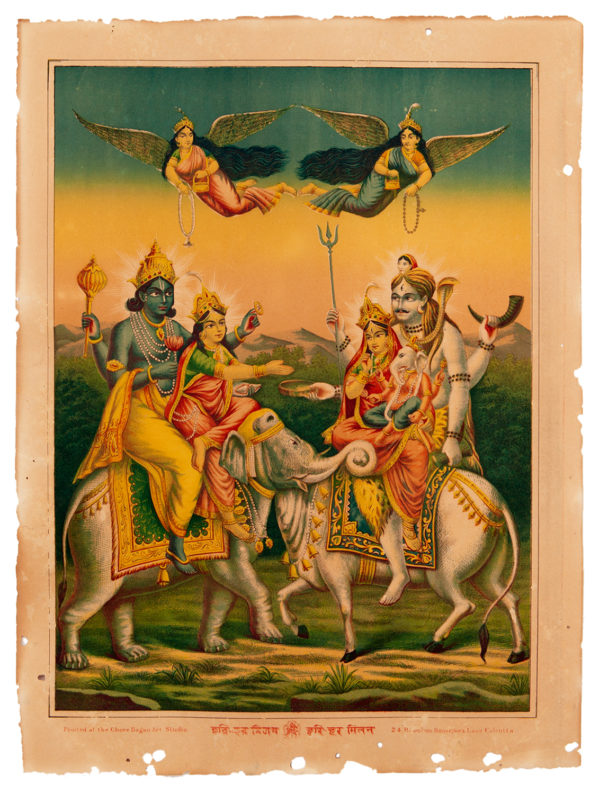
Chore Bagan Art Studio, Hari Har Milan, Late 19th century, Chromolithograph on paper
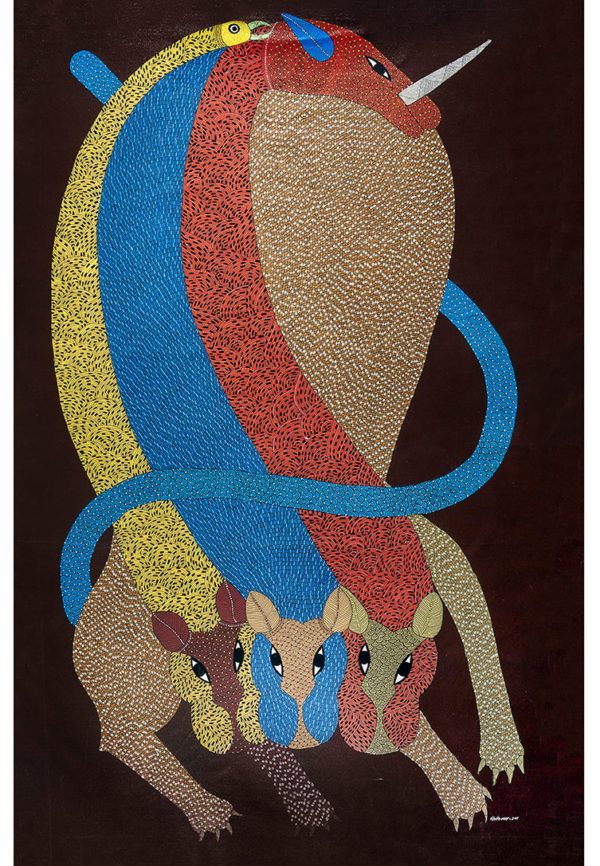
Dileep Shyam, Metaphor of a tippler, 2011, Acrylic on canvas
From the medieval to the contemporary moment, artists have depicted the animal world in countless ways—including abstract and stylised forms— and within diverse contexts. Sometimes employing them as motifs, sometimes as symbols, and sometimes as the primary subjects. Living in times when the environmental future of the world is at stake, this continued fascination and engagement of the visual arts with the animal kingdom might have a message for all of us. It makes us ponder over their hold over the collective human psyche, their innate importance in the natural scheme of things and will hopefully lead us to recognise how integral and indisputable their presence is for the very survival of the human race.
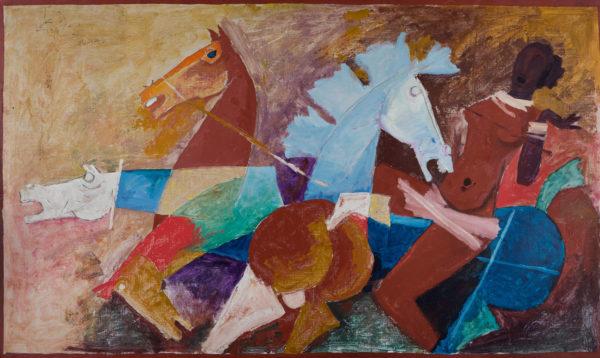
M. F. Husain, Woman and Four Horses, Oil on canvas, 1976
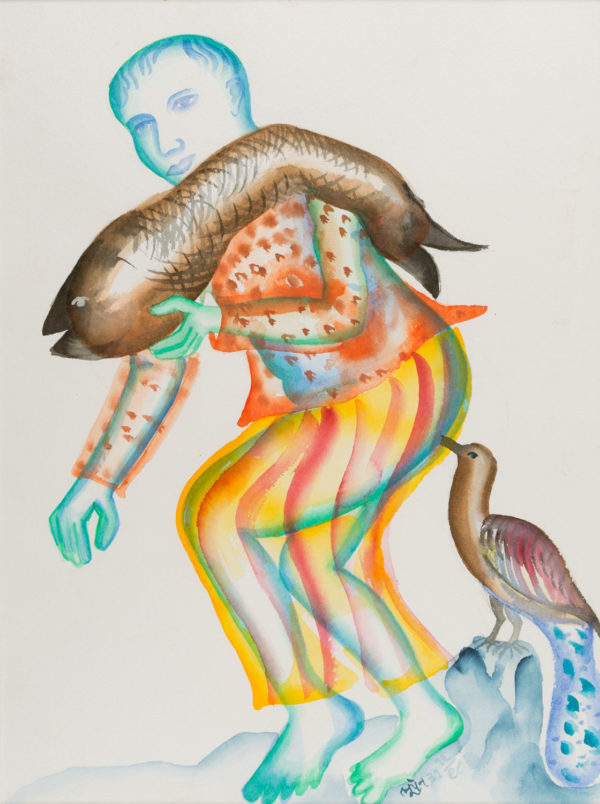
Bhupen Khakhar, Man carrying fish, Watercolour on paper, 1998








